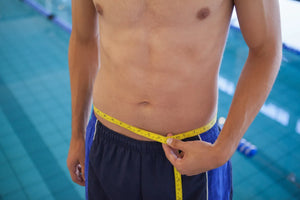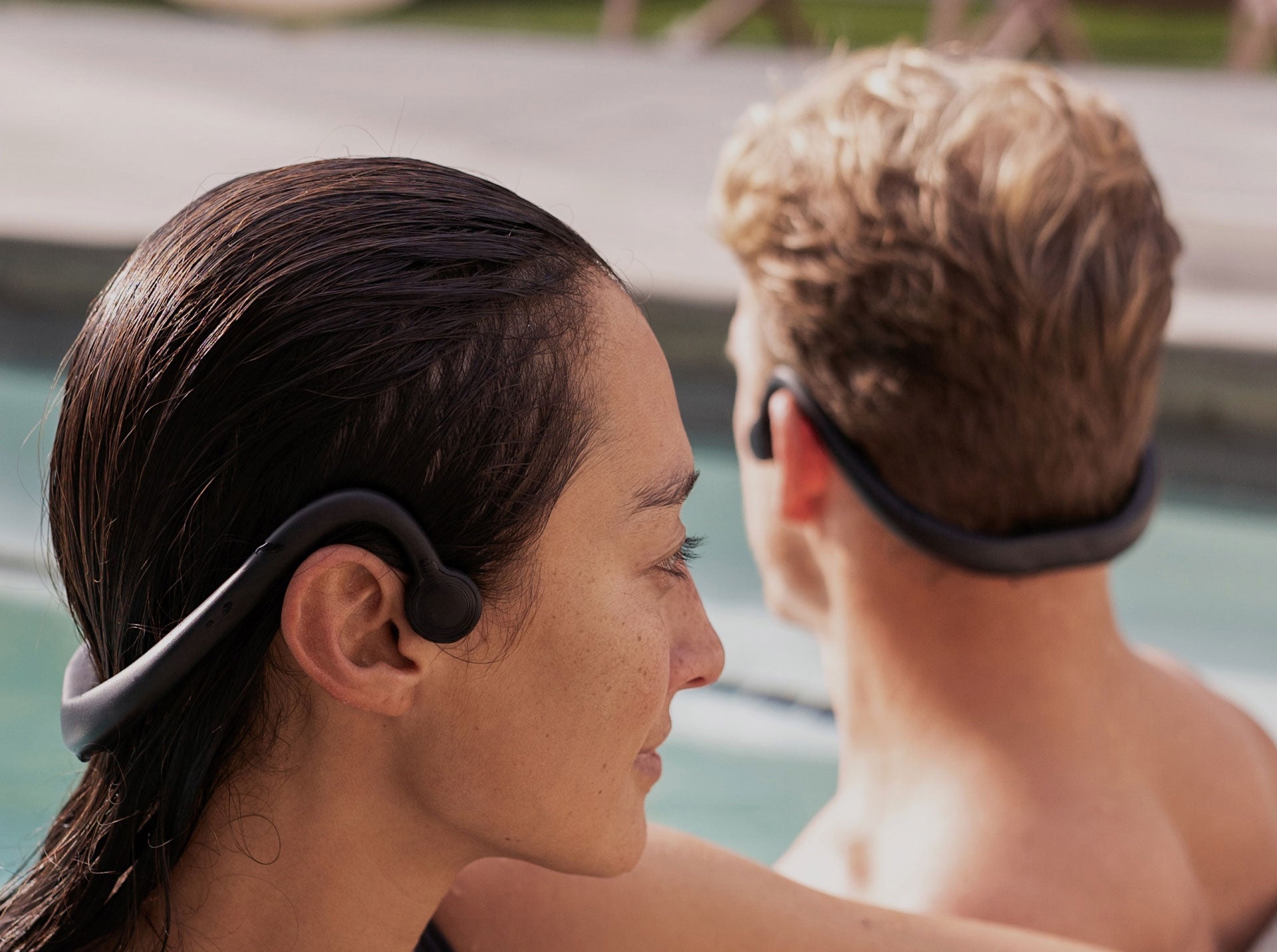Does Swimming Actually Burn Fat?
For decades, swimming has been hailed as one of the most effective, gentle, full-body workouts out there. It improves cardiovascular health, engages multiple muscle groups, and is easy on the joints, making it accessible to people of all body types, fitness levels, and abilities.
Still, this key question remains: Can swimming actually burn fat? Let’s dive headfirst into everyone’s favorite aquatic workout routine and get to the bottom of the science surrounding all things swimming.
What Are Some Common Myths About Swimming as Exercise?
First, let’s dispel some of the myths about swimming.
Myth #1. You Have To Be in Really Great Shape To Be a Swimmer
Absolutely not! In fact, the opposite is true. Swimming is a wonderful exercise to try out if you want to get in shape. One of the best things about swimming is how forgiving it is on the body, which is perfect for beginners who need to ease in slowly.
Myth #2. You Don’t Sweat When You Swim
We hate to break it to you, but if you typically sweat when you do other cardio exercises like jogging or cycling, you will most likely work up a sweat in the local pool as well. It might seem like you’re not sweating, but truthfully, the water surrounding your skin is just concealing it.
If your swim cap is super tight and waterproof, you may notice some sweat in your hair after a good swim.
Myth #3. You Have To Wait an Hour After Eating Before You Swim
This is categorically untrue. We’re not sure who came up with this falsehood, but it’s just that.
Swimming is just like any other exercise. You probably don’t want to down an entire steak dinner and then go for a swim, but a little pre-workout fuel like a banana or a granola bar isn’t going to hurt.
Myth #4. You Have To Have a Certain Body Type To Swim
You may have seen graphics that analyze why Michael Phelps has the perfect body structure for swimming, but this doesn’t mean you need to have a specific body type to be a good swimmer. Just like any other sport, you can train to become great!
Myth #5. Swimming Will Bulk Up Your Shoulders
Again, this myth might exist because of how certain Olympic athletes look, but in truth, they had to do a lot of hard work to get boulder shoulders like that! Regular swimming for exercise is highly unlikely to dramatically change your muscle structure. It’s much more likely that you’ll tone up those arm muscles and look fantastic in a tank top.
How Does Swimming Engage Muscle Groups for Fat Burning?
Let’s talk about the mechanics of fat burning. While “fat” has come to function as a dirty word, it actually serves an important purpose: it is a stored energy source.
The process of burning fat, which involves converting stored fat into usable energy, is called lipolysis and is triggered when we need more energy than we are getting from the food we consume. This is why diet and exercise combined make the best weight loss combination.
Exercise alone, of any type, is unlikely to get rid of unwanted fat stores if we are not eating fewer calories than we are burning.
With that said, one of the most effective ways to burn the most calories (which translates to burning the most fat) is to exercise multiple muscle groups at a time. Experts agree that there are few exercises out there that work as many muscle groups simultaneously as swimming does.
When you are getting in a solid swim workout, you are exercising the following muscle groups:
- Core abdominal and lower back muscles
- Upper back muscles
- Deltoid and shoulder muscles
- Glutes and hamstring muscles
- Forearm and triceps muscles
The fact that swimming works all of these muscle groups offers twofold benefits: the swimmer burns a greater number of calories in a single workout, and these muscles gain strength and size, leading to greater overall caloric burn.
What Is the Afterburn Effect Following a Swim Session?
Thanks to the way that swimming combines cardiovascular exercise and resistance training, swimmers can expect to reap the benefits of their workouts even after that tough workout session. Feeling amazing and energized after a workout isn’t just in your imagination — there’s some science behind that adrenaline high.
During any intense exercise, a person’s metabolic rate increases, often drastically. Once the workout ends, that metabolic rate doesn’t just immediately go back to normal or “resting.” Some call this phenomenon the “Afterburn Effect,” but there is a scientific term for it: Excess Post-Exercise Oxygen Consumption, or EPOC.
Yet another piece of terminology for this post-workout buzz is the phrase “oxygen debt,” which refers to the amount of oxygen the body needs to consume to return to its previous resting state. Unsurprisingly, studies have shown that the more intense the workout, the longer the body will remain in this EPOC phase.
What might surprise some people is that it is not merely intense HIIT cardio sessions that spark this afterburn effect. What really fuels the metabolic rate is a varied workout that includes intervals or compound movements.
How To Design a Swim Routine That Targets Stubborn Fat
There is a way to carve out the most from your swim workout in the fat-burning department. The key to maximizing fat burn is variety, which will likely make your workouts more interesting and enjoyable.
Interval sessions are periods of intense energy expenditure, followed by a recovery period. If you are in training or just trying to shed a few pounds, interval training should make up a substantial portion of your swim sessions.
When it comes to intervals, the name of the game is time. The amount of time you spend in the intense “sprint” can and will depend on how experienced and in shape the swimmer is.
The beginner might consider a 30-second sprint followed by a 45-second rest period. However, once further along in their training, that same swimmer may increase to a one-minute sprint and 30 seconds of recovery, and so on.
Some swimmers choose to break intervals up into the number of reps rather than using time as a metric. Just as with time, the swimmer will increase difficulty with progression.
Music can be a fantastic motivator when it comes to intervals, and a carefully curated playlist means that savvy swimmers can swim to the rhythm of their songs one by one.
What Are Some Additional Benefits of Swimming?
Amazing fat-burning potential is not the only benefit that swimming offers. There are many more reasons to hop in the pool and get your laps in!
Here are a few additional benefits of swimming:
1. It’s Great Exercise for Those With Ailments
People who suffer from injuries, arthritis, or other conditions may be able to swim even if other types of high-impact exercise are off the table. Swimming may even help with pain and speed up recovery times from injuries!
2. Improved Sleep
For many adults who struggle with insomnia, swimming has been found to provide somnambular benefits. In a study of older adults with insomnia, participants reported better sleep after a swimming session.
3. Better Mood
Swimming can also improve your mood and overall outlook. Sure, many of us swim for exercise, but numerous studies have shown that swimming can boost your mood.
4. Lowered Stress
Swimming is unique because it forces us into a vastly different environment from the rest of our daily lives. It’s an environment with an element of immersion and departure from the daily stresses of life. A solid swim workout can not only improve your mood but can also reduce your stress.
5. It’s a Fantastic Family Activity
Swimming is an exercise you can do with your whole family, from infancy to adulthood. Most kids really enjoy being in the water, and a fringe benefit is that swimming will have all the benefits for kids that they have for adults.
Improved mood and better sleep? Sign us up!
Conclusion
Ultimately, swimming does burn fat. In fact, it’s one of the best fat-burning activities a person can do, not only for the calorie-torching effects but also for the afterburn that the swimmer will enjoy for up to hours after the swim.
With a well-executed interval workout and some fast-paced tunes, you can expect maximum fat-burning results. Bonus: You’ll also enjoy the additional benefits swimming offers, such as better mood and sleep and less stress.
Don’t worry about getting too bulky; it’s not going to happen with swimming! Just prepare for an amazing workout and a lot of calorie burn.
Sources:
12 Benefits of Swimming: Weight Loss, Health, and More | Healthline
Swimming - Health Benefits | Better Health Channel
8 Ways to Lose Belly Fat and Live a Healthier Life | Johns Hopkins Medicine



